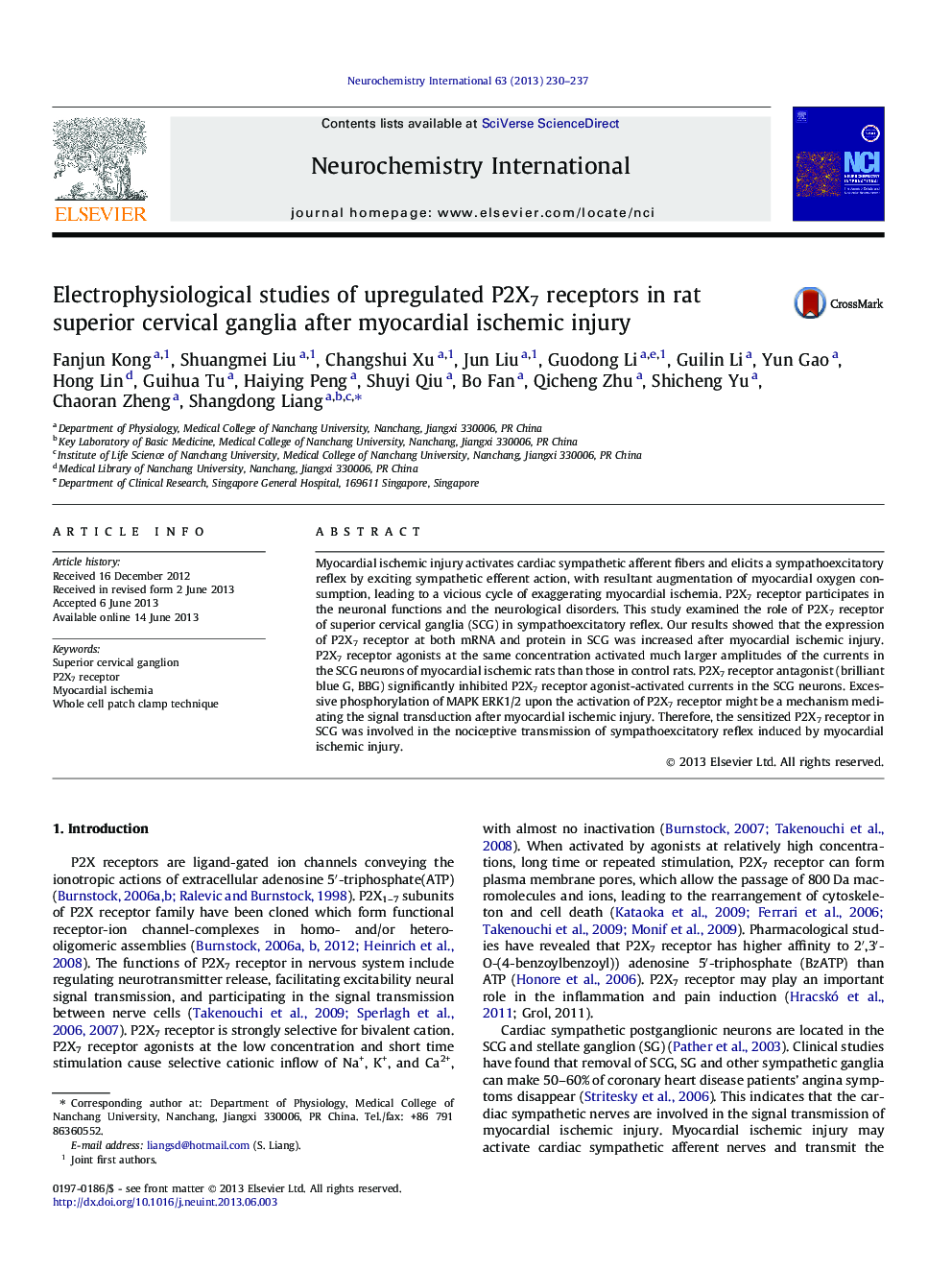| Article ID | Journal | Published Year | Pages | File Type |
|---|---|---|---|---|
| 2200590 | Neurochemistry International | 2013 | 8 Pages |
•The expression of P2X7 in SCG was increased after myocardial ischemia.•ATP-activated currents on SCG neurons were enhanced after myocardial ischemia.•P2X7 antagonist inhibited P2X7 agonist-activated currents.•Sensitized P2X7 was involved in the transmission of sympathoexcitation.
Myocardial ischemic injury activates cardiac sympathetic afferent fibers and elicits a sympathoexcitatory reflex by exciting sympathetic efferent action, with resultant augmentation of myocardial oxygen consumption, leading to a vicious cycle of exaggerating myocardial ischemia. P2X7 receptor participates in the neuronal functions and the neurological disorders. This study examined the role of P2X7 receptor of superior cervical ganglia (SCG) in sympathoexcitatory reflex. Our results showed that the expression of P2X7 receptor at both mRNA and protein in SCG was increased after myocardial ischemic injury. P2X7 receptor agonists at the same concentration activated much larger amplitudes of the currents in the SCG neurons of myocardial ischemic rats than those in control rats. P2X7 receptor antagonist (brilliant blue G, BBG) significantly inhibited P2X7 receptor agonist-activated currents in the SCG neurons. Excessive phosphorylation of MAPK ERK1/2 upon the activation of P2X7 receptor might be a mechanism mediating the signal transduction after myocardial ischemic injury. Therefore, the sensitized P2X7 receptor in SCG was involved in the nociceptive transmission of sympathoexcitatory reflex induced by myocardial ischemic injury.
